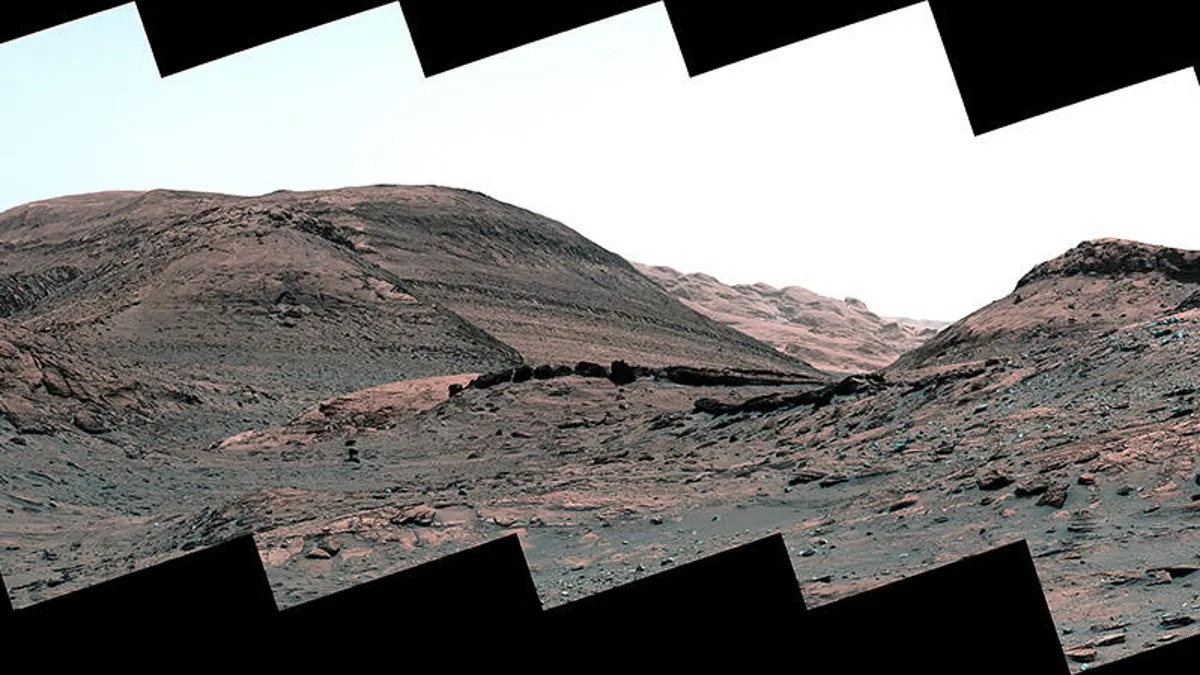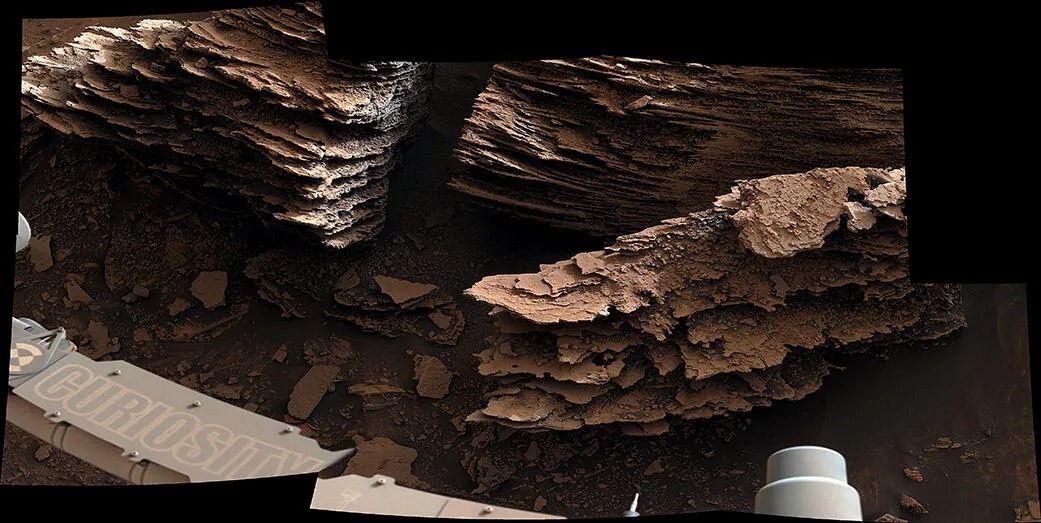As it moves towards the dried-up river delta in the Jezero crater, the NASA Perseverance rover encounters a lot of interesting things. Last week, a wheeled robot found debris left after landing on Mars. Against the background of such interesting events, we somehow forgot about its “elder brother”, the Curiosity rover. The veteran rover is now exploring another area in Gale Crater, which offers spectacular views.

On June 21, NASA released a series of images showing the fascinating landscape revealed by Curiosity at the foot of Mount Sharp – a massive central elevation in the crater. Being in this area, Curiosity seeks to better understand how water existed on Mars in the past and whether it could contain microbial life.
Clay and Sulfates
The transition zone is located between two areas – clay-containing and sulfate-containing. The composition indicates the different types of minerals found in each region. NASA has already described this area as “exciting from a scientific point of view.” The agency also said that the find indicates a serious change in the climate of Mars billions of years ago.

Clay minerals can be traced back to ancient lakes and streams. Now that Curiosity is higher up at the foot of Mount Sharp, the landscape is gradually changing.
Geological Holiday
“As it climbs, we no longer find lake sediments that we have seen for years at the foot of Mount Sharp. Instead, we come across a lot of evidence of a drier climate on Mars, such as dunes around which streams sometimes flowed. This is a big difference from lakes that may have existed millions of years ago,” says Curiosity project scientist Ashwin Vasavada.

The space agency said the hills in the area probably formed from sand dunes hardened into rock. The rover spotted “layered, flaky” rocks that look like stacks of broken waffle cookies. These fascinating formations could have appeared due to the action of water in an ancient riverbed or pond. For scientists, such discoveries are a real geological holiday.
Follow us on Twitter to get the most interesting space news in time
https://twitter.com/ust_magazine
